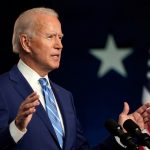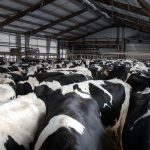
In total, it’s estimated a day’s worth of U.S. milk production each week goes to exports, which equates to nearly $6.5 billion in U.S. dairy products, which are sent to 133 countries. The top buyer of U.S. dairy products is China, which has been on a buying spree lately. U.S. dairy exports to China were up 32% during the first half of the year on a milk equivalent basis.
So, what’s driving that dynamic demand even through the pandemic? The U.S. Dairy Export Council (USDEC) says it’s the fact the health benefits of dairy are being advertised to consumers during the pandemic.
“A lot of that has to do with the Chinese government telling consumers, ‘Hey, dairy is really nutritious, it’s a great thing for your immunity, go out buy dairy products,’” says Will Loux, director of global trade analysis, U.S. Dairy Export Council. “And so frankly, Chinese consumers did that, and as a result, we’ve seen a huge spike and imports of everything from some of those milk powder to cheese.”
But Loux says exporting those products has been no easy feat, as the shipping issues, especially on the West Coast, are a major hurdle. It’s not just adding to the cost, but forcing exporters to get creative.
“Customers overseas are trying to figure out, ‘Okay, do we trust the U.S. to get us this product on time? Are they willing to make those sales in the first place? And if they are, are they willing to pay that price that they were willing to pay before,” says Loux. “At the same time, exporters are having to pay added costs just to make sure that their products get on a boat, whether it’s as we’ve seen butter moving out of Duluth, Minn., to Thailand or air freighting product. All of that really adds cost throughout the supply chain, which then impacts dairy farmers.”
Reports this week showed a bit of optimism as far as moving through the backlog of containers on the West Coast. The Wall Street Journal reported the cost to move a container fell by more than one-quarter last month, the biggest decline in two years.
While it will take months to work through the backlog on the West Coast, Loux says the window to move some of those empty containers sitting there is now a message USDEC has made clear to leaders in Washington.
“Our trade policy team is leading that effort in coordination with the National Milk Producers Federation (NMPF) to really be pushing the administration into creative ideas — like telling the carrier companies that if they’re going to dock in the United States, they need to make sure they’re picking up U.S. dairy exports and agricultural exports if those exporters are willing to pay to have the product and are able to get it out.”
Loux acknowledged clearing through the backlog and all the supply chain issues will be no easy feat.
“It’s a huge supply chain challenge that there are a lot of different ways that we need to be tackling this from the labor side, all the way to the actual equipment side at the ports to expanding really the amount of container space that is that’s allowed in some of these ports to really move more product and clear that backlog going forward,” says Loux. “So it’s a huge issue. There’s no silver bullet, but we’re working on it in a lot of different ways.”























